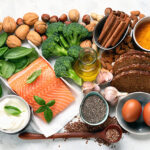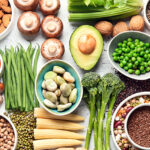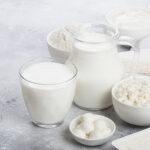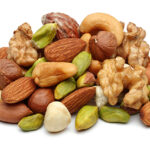KEEP GOOD CARBS AND CARRY ON
YOGHURT CULTURE
Yoghurt has long been a part of the human diet. The word seems to come from come from the Turkish yoğurmak, to thicken, coagulate, or curdle, which is what its beneficial bacterial cultures do as they feed on milk’s natural lactose and turn it into the lactic acid that gives yoghurt its characteristic taste and texture. At the same time, they transform a nutrient-rich food (milk) into an even better one by making it easier for us to digest and by promoting health by restoring levels of beneficial probiotic bacteria in the gut.
Yoghurt is a great source of calcium for healthy bones and contains significant amounts of vitamins A, B12 and riboflavin, as well as potassium and other minerals. Its low GI is thanks (mainly) to the combination of acidity and high protein and the fact that lactose itself has a naturally low GI.
Production has taken off in a big way. When shopping, look for products with live cultures and few (if any) additives. We like pot-set Greek-style yoghurt, especially those that are strained so they’re naturally thicker and higher in protein. As dietitian Nicole Senior says: “These products have beautiful mouth-feel and flavour as well as better cooking properties, although all yoghurts are best added after cooking or at the last minute rather than cook in the dish as they will separate.”

Natural (unflavoured) yoghurt can be a star in savoury dishes says Nicole. It makes a great base for dips, such as baba ganoush or cucumber raita, not to mention beetroot kiz guzeli. Pumpkin soup lovers will know the pleasures of a dollop of yoghurt on top, as will those who enjoy the cooling and creamy addition on Indian curries. What else?
- Dollop on porridge or muesli along with some nuts and a drizzle of honey or date syrup
- Add to fruit and milk to make smoothie
- Use as a topping on desserts instead of cream
- Tuck into as a snack to get you through to your next meal.
WHAT ABOUT LACTOSE INTOLERANCE OR LACTASE DEFICIENCY?
Lactose, the sugar that occurs naturally in milk and yoghurt, is digested into glucose and galactose by the enzyme lactase found in the small bowel of all mammals at birth (apart from those born with lactase deficiency). A person without enough lactase has digestive problems when they consume foods and drinks that contain lactose. About a third of the world’s population continues to produce lactase throughout life. The rest don’t. However, there are many lactose-free milks and yoghurts on the market, so there’s no need to go without calcium-rich dairy foods. Some people who are lactose intolerant find they can enjoy yoghurt because the micro-organisms added to milk to make yoghurt are active in digesting lactose during passage through the small intestine, in other words, the “bugs” help do the job of lactose digestion for you. People with lactose intolerance can eat cheese because it is made from milk solids (curd); the lactose-rich whey has been drained off during the early stages of processing.







